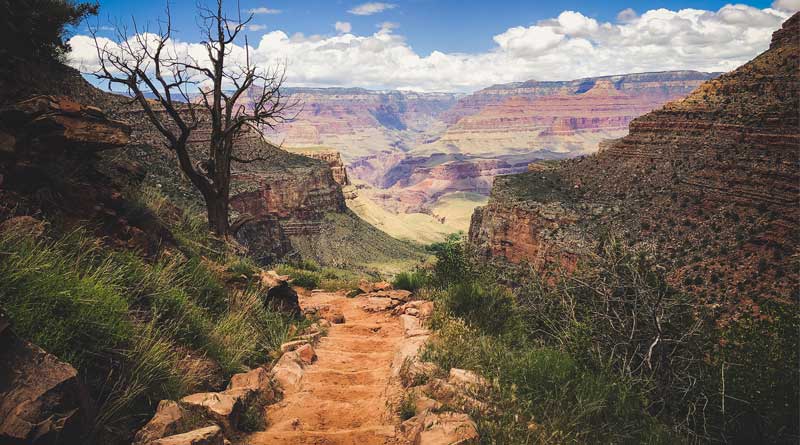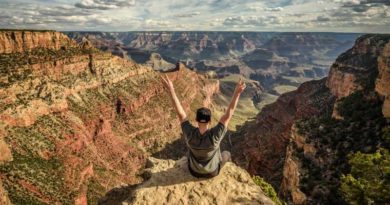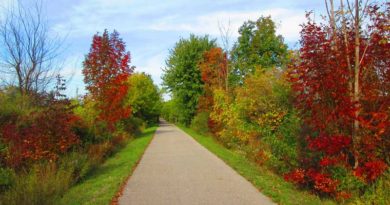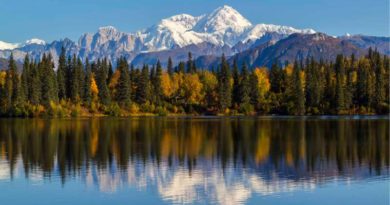Top 5 Popular Hiking Trails in the US
Hiking is a popular activity in the United States, offering a chance to connect with nature and explore stunning landscapes. From coast to coast, the US is home to some of the most iconic and beautiful trails in the world. Whether you’re a beginner or an experienced hiker, there’s something for everyone. Some trails offer short, easy hikes, while others challenge you with steep climbs and rugged terrain. In this article, we’ll take a look at the top 5 popular hiking trails across the country. Each one is unique and offers its own adventure, making them must-visit destinations for any hiking enthusiast.
1. Appalachian Trail (Eastern US)
-
Length: ~2,200 miles
-
Highlights: Scenic forests, mountains, and diverse wildlife
-
Best Sections: Great Smoky Mountains, Shenandoah National Park, and the White Mountains
-
Difficulty Level: Moderate to challenging
The Appalachian Trail is one of the most iconic hiking routes in the United States, spanning roughly 2,200 miles from Georgia to Maine. It passes through 14 states, offering diverse landscapes, from dense forests to alpine peaks. Hikers can enjoy a range of terrains, including quiet woodlands, rocky ridges, and beautiful valleys. The trail is famous for its wildlife, including deer, black bears, and various bird species. It’s an adventure that allows hikers to immerse themselves in nature, with panoramic views at nearly every turn.
Though thru-hiking the entire trail is a major commitment, many opt to explore shorter sections. Popular spots for day hikes or weekend trips include the Great Smoky Mountains, Shenandoah National Park, and the White Mountains in New Hampshire. The trail offers varying levels of difficulty, from moderate paths to more strenuous climbs, so it’s accessible to both novice and experienced hikers. With its historic charm and stunning scenery, the Appalachian Trail is a must-visit for outdoor enthusiasts.
2. Pacific Crest Trail (West Coast)
-
Length: ~2,650 miles
-
Highlights: Deserts, mountain passes, and stunning lake views
-
Best Time to Hike: Spring to early fall
-
Notable Sections: John Muir Trail portion, Oregon’s Crater Lake
The Pacific Crest Trail (PCT) runs for about 2,650 miles, stretching from the Mexican border in California to Canada. It passes through some of the most scenic landscapes in the western United States, including deserts, towering mountains, and lush forests. Hikers can enjoy stunning views of the Sierra Nevada, Cascade Range, and many pristine lakes. The trail is known for its dramatic changes in scenery, with hikers experiencing everything from desert heat to snow-covered peaks. The PCT also offers incredible opportunities for spotting wildlife like mule deer, mountain lions, and a variety of bird species.
Though the entire PCT is a long journey, it’s also a popular trail for section hiking. Some sections, like the John Muir Trail in California, are particularly famous for their beauty. The best time to hike the PCT is usually from spring to early fall, with summer being ideal for most sections. While the trail offers a mix of easy and challenging terrains, hikers should be prepared for altitude changes and unpredictable weather. Whether you’re tackling a section or going for a thru-hike, the Pacific Crest Trail promises an unforgettable adventure.
3. Zion Narrows (Utah)
-
Length: ~16 miles (top-down)
-
Unique Features: Slot canyons, river hiking experience
-
Permit Requirement: Yes
-
Difficulty: Moderate (with water crossings)
The Zion Narrows is one of the most unique and breathtaking hikes in Zion National Park, Utah. This 16-mile trail follows the Virgin River through a narrow canyon with towering rock walls that reach up to 1,000 feet high. The hike itself involves wading through the river, making it a wet adventure with varying water levels. The dramatic canyon walls, combined with the flowing river, create a one-of-a-kind hiking experience. The Narrows offers a stunning view of the surrounding red rock formations, with sunlight filtering through the narrow passage, creating beautiful light and shadow play on the canyon walls.
The trail can be hiked from bottom to top (a shorter, more accessible route) or top to bottom (a more challenging option that requires a permit). The hike is moderate in difficulty, though water crossings and slippery rocks can make it tricky, especially after rainfall. Summer and early fall are the best times to visit, though hikers should check conditions beforehand, as flash floods can make the trail dangerous. If you’re looking for an adventurous, water-filled hiking experience, the Zion Narrows is an unforgettable destination that offers both beauty and excitement.
4. Half Dome, Yosemite National Park (California)
-
Length: ~14-16 miles round trip
-
Famous for: Iconic rock formation, cable ascent
-
Best Time to Hike: Late spring to early fall
Half Dome is one of the most iconic landmarks in Yosemite National Park, California. This 14-16 mile round-trip hike takes you to the summit of the famous granite peak, offering incredible views of Yosemite Valley, surrounding forests, and distant mountain ranges. The first part of the trail is challenging, with a steady climb through forests and across rocky terrain. As you approach the summit, the trail becomes steeper and more strenuous. The final stretch involves climbing the steep granite slope with the help of cables, which are set up for hikers to use in the summer months.
Hiking to Half Dome is a serious challenge and should not be taken lightly. The cables section requires both physical strength and mental focus, especially for those afraid of heights. Permits are required to hike Half Dome, and these can be obtained through a lottery system. The best time to hike is during late spring to early fall, when the weather is more predictable. It’s important to be prepared for long hours, varying weather, and potential altitude effects. Despite the difficulty, reaching the summit of Half Dome is a rewarding achievement with some of the most spectacular views in the country.
5. Bright Angel Trail, Grand Canyon (Arizona)
-
Length: ~9.5 miles one way
-
Best For: Scenic views of the Grand Canyon, well-maintained trail
-
Difficulty Level: Strenuous (due to elevation gain)
The Bright Angel Trail is one of the most popular and accessible hikes in the Grand Canyon, Arizona. This 9.5-mile trail begins at the South Rim and descends into the canyon, offering stunning views of the canyon’s layers and rock formations. The trail is well-maintained and features several rest stops along the way, making it a bit more manageable for hikers. Along the descent, hikers can enjoy the changing landscapes, from the rim’s desert vegetation to the cooler, lush surroundings closer to the Colorado River. The trail offers a unique opportunity to experience the Grand Canyon’s vastness from within.
The hike can be strenuous due to the steep descent and the hot temperatures, especially during summer. The round-trip hike to the river and back can be a full-day challenge, but many opt to turn back at the 3-mile or 6-mile points. Water stations are available at key locations, but it’s essential to carry enough water and snacks for the journey. The Bright Angel Trail is a fantastic way to experience the Grand Canyon’s beauty up close, but hikers should be prepared for the physical demands of this iconic trail.
Conclusion
These top 5 hiking trails in the US offer some of the most breathtaking landscapes and unforgettable experiences for outdoor enthusiasts. Whether you’re tackling the rugged terrain of the Appalachian Trail, wading through the stunning Zion Narrows, or summiting Half Dome in Yosemite, each trail provides its own unique adventure. From scenic views to challenging climbs, there’s something for every level of hiker. Remember, preparation is key—plan ahead, stay safe, and take in the beauty that each trail has to offer. No matter which one you choose, these trails will leave you with memories and a deeper connection to the natural world.




